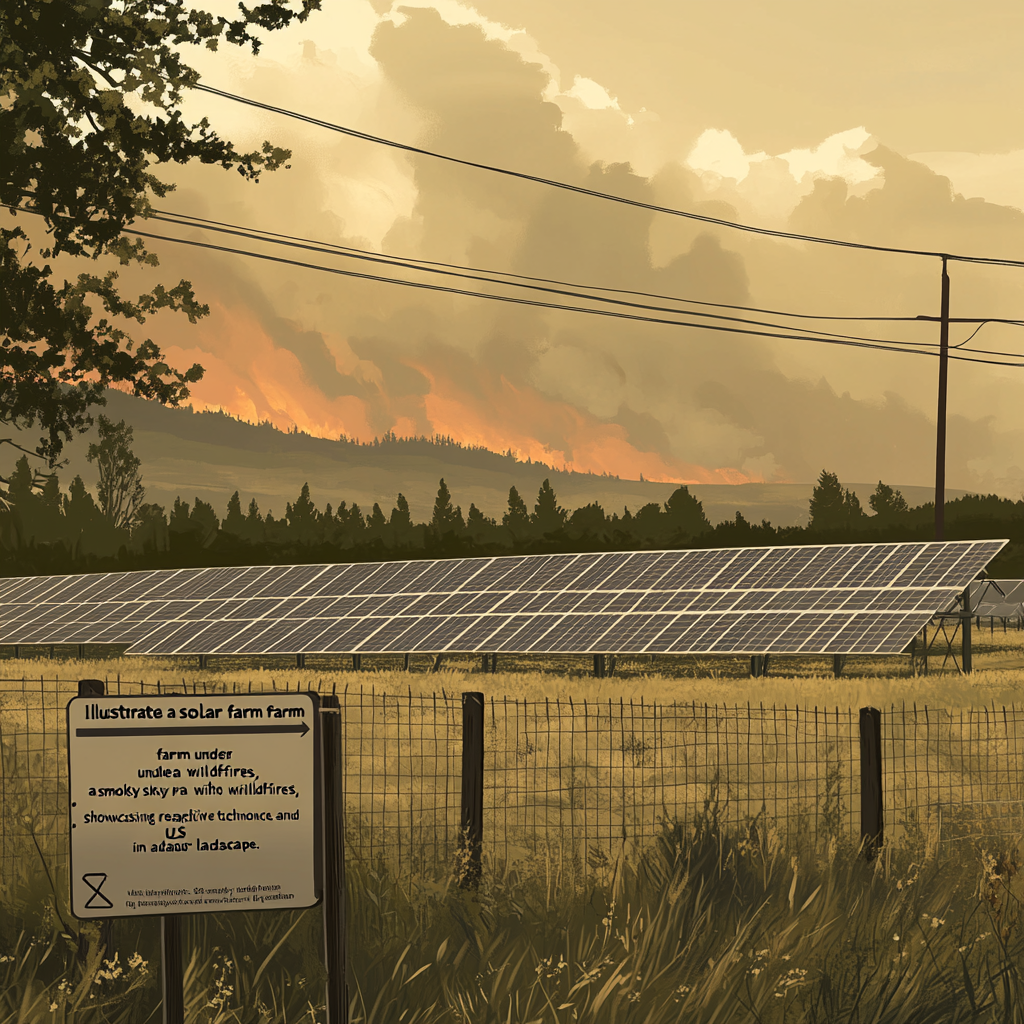
Sustained US Solar Output Amid Intense Fire Seasons
In the ever-evolving saga of renewable energy, one narrative stands tall, lit up like an unending sunset—solar power. And while the natural world throws fiery tantrums, we ought to be asking ourselves: how well does this electrifying solution hold its ground amid raging wildfires? The latest findings from Colorado State University appear to be waving reassuring flags high above the smoky skies. Sit tight, grab a cup of your favorite brew, and let’s dive into the compelling world of solar energy resilience.
Although wildfires are becoming as common as sitcom reruns, the research reveals a striking truth: American solar power generation demonstrates a commendable level of stability, even when the flames lick dangerously close. A noteworthy study, fresh off the press in Nature Communications, undertakes a brave mission—analyzing how wildfire smoke disrupts photovoltaic (PV) systems across various regions and timeframes. Spoiler alert: it seems that despite the fiery chaos, our solar soldiers don’t crumble as easily as one might expect.
The Interplay of Smoke and Sun
Let’s clear the air—quite literally. Wildfire smoke can be a real menace when it blankets regions around ongoing fires, blocking the precious sunshine that solar panels so desperately seek. But don’t toss your solar panels into the inferno just yet. The study’s findings reveal a rather refreshing twist: the further you are from the flames, the more they lose their dastardly grip on solar output. Think of it this way: the closer you are to the action, the more the sun is obstructed—like a heavy cloud perpetually shadowing your picnic. But once that smoke ventures into the atmosphere, particularly over areas like the Midwest and East Coast, the diminishing effects are practically negligible. In ragged numerical terms, we’re talking reductions verging on 5% or even as low as 2% compared to those golden-smoke-free years. It’s a small price to pay when you realize that the sun still shines bright in most parts.
Now, if we zoom into the technicality of things, we encounter something known as Global Horizontal Irradiance (GHI). Fancy jargon aside, GHI measures all the solar energy hitting the Earth’s surface, both the direct rays and that delightful scattered light. This metric is crucial for flat-plate photovoltaic systems, which dominate the American solar scene. The research indicates that while GHI experiences some slight bruising from wildfire smoke, the long-term impact on solar power generation remains largely unscathed—unless you’re chilling right next to an inferno.
Fortifying Resilience
Having established that solar power isn’t quite ready to throw in the towel against wildfires, let’s talk strategy. The golden rule here? Preparation is everything! From the drawing board to deployment, we can implement several ingenious tactics to boost the durability of those precious PV systems. For starters, let’s talk materials. Selecting fire-resistant PV modules—those with the high-end Class A or B ratings—can be a game-changer. They’re not just your average panels; these are designed to withstand blazing heat for an extended period while minimizing flame spread. It’s about creating more time for emergency responders to quench the flames before they become destructive.
But it doesn’t stop there. Picture this: fire-resistant materials woven into the very core of PV systems, encompassing racking assemblies, electrical components, and the like. This is especially crucial in wildfire-prone regions like California or Nevada, where the sun shines bright but the risk dances dangerously close.
Now, don’t underestimate the power of routine maintenance. Keeping solar systems in tip-top condition is like pampering your favorite plant; it’ll thrive and survive. Regular checks for loose screws and frayed wires can go a long way in preventing significant failures when things get heated. Speaking of keeping the lights on, let’s not forget about battery storage. When wildfires throw a wrench into the operations, having robust battery backups can mean the difference between maintaining power or scrambling for natural gas reserves. It’s about keeping things running smoothly amidst the chaotic dance of nature.
The Regional Landscape
One thing stands clear: some regions are playing with fire—literally. The sunniest spots in the US often thrum with wildfire risks. Understanding these regional dynamics is of paramount importance for future solar installations. The National Renewable Energy Laboratory has been dutifully mapping out solar resources alongside wildfire risks, guiding the way for strategically placing solar facilities that remain effective without playing roulette with fire-prone areas.
And as we look ahead to a brighter future, where the US aims to boost solar energy contributions from a meager 3% to an ambitious 45% of our energy mix, these insights are priceless. Yes, localized impacts near active fires can be daunting, but in the grand tapestry of the nation’s energy portfolio, the long-term effects of wildfire smoke seem to pale in comparison. The future looks bright, indeed, as we navigate through the challenges and find ways to harness the sun’s power sustainably.
In Summary
So here we are, my environmentally-conscious friends. US solar power generation strode confidently through the threat of wildfires, showcasing resilience that deserves a standing ovation. The local disturbances may be significant near the flames, but when we zoom out and see the broader landscape, it’s clear that solar power is poised to shine through the smoke.
Want to stay up to date with the latest news on solar power and its resilience against natural disasters? Here are some resources to help you stay informed:
- Colorado State University Research: Dive into the full paper on wildfire smoke's impact on solar power generation published in Nature Communications.
- US Department of Energy Resources: Check out the PV System Owner's Guide for tips on weather vulnerabilities and how to keep those solar panels in fighting shape.
- National Renewable Energy Laboratory: Unearth detailed insights on solar radiation databases and strategies to fortify against wildfires.
Want to stay in the loop with the freshest updates on solar energy and its impressive journey through the challenges posed by nature? Subscribe to our Telegram channel: @channel_neirotoken

